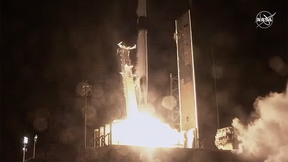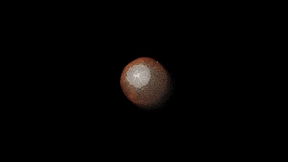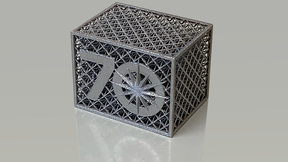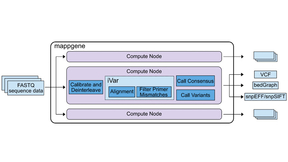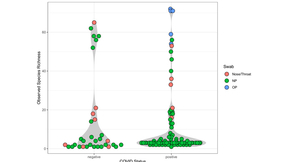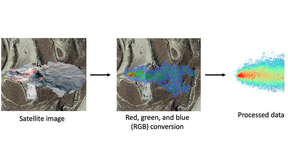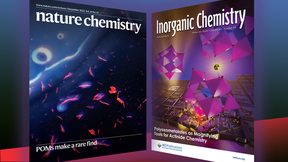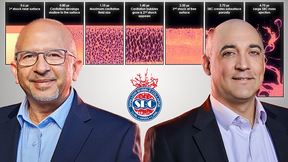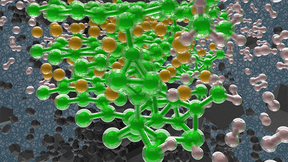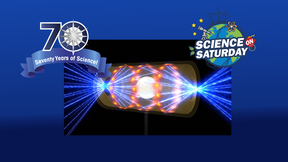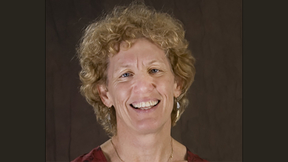Back
Lab physicist William Evans has been selected to serve on the board of directors for the Fannie and John Hertz Foundation, a nonprofit organization dedicated to empowering the most promising innovators in science and technology. Evans is the physics division leader in the Physical and Life Sciences Directorate at Lawrence Livermore National Laboratory (LLNL), which works…
A prototype telescope designed and built by Lawrence Livermore National Laboratory (LLNL) researchers has been launched from Cape Canaveral, Fla., to the International Space Station (ISS). Known as the Stellar Occultation Hypertemporal Imaging Payload (SOHIP), the telescope uses LLNL patented-monolithic optics technology on a gimbal to observe and measure atmospheric…
When it comes to studying particles in motion, experimentalists have followed a 100-year-old theory that claims the microscopic motion of a particle is determined by random collisions with molecules of the surrounding medium, regardless of the macroscopic forces that drive that motion. Scientists at Lawrence Livermore National Laboratory (LLNL) and the Massachusetts…
The nitrate runoff problem, a source of carcinogens and a cause of suffocating algal blooms in U.S. waterways, may not be a harbinger of doom. A new study led by the University of Illinois Urbana-Champaign and researchers from Lawrence Livermore National Laboratory (LLNL) demonstrates an approach for the integrated capture and conversion of nitrate-contaminated waters into…
On the morning of Feb. 15, 2013, a small asteroid exploded over Chelyabinsk, Russia, sending a loud shockwave and sonic boom across the region, damaging buildings and leaving around 1,200 people injured. The resulting meteor, with a diameter of approximate 20 meters (roughly the size of a six-story building), was one of the largest to be detected breaking up in the Earth’s…
A series of experiments conducted at the Omega Laser, part of the University of Rochester’s Laboratory for Laser Energetics, provide new insights into magnetic reconnection, a process that could help explain stellar flares and other astrophysical phenomena. The research confirmed that unstable ion-acoustic waves (IAWs) could be important to further understanding of the…
Lawrence Livermore National Laboratory (LLNL) engineers and scientists have developed a method for detecting and predicting strut defects in 3D-printed metal lattice structures during a print through a combination of monitoring, imaging techniques and multi-physics simulations. The high-strength and low-density properties of metallic lattices have found applications in…
High-power lasers now create record-high numbers of electron-positron pairs, opening exciting opportunities to study extreme astrophysical processes, such as black holes and gamma-ray bursts. Positrons, or "anti-electrons," are anti-particles with the same mass as an electron but with opposite charge. The generation of energetic electron-positron pairs is common in extreme…
The emergence, spread, and evolution of severe acute respiratory syndrome coronavirus-2 (SARS-CoV-2) has been chronicled by the scientific community with greater speed and depth than any other human pathogen due to the advent of widespread genomic sequencing. To facilitate this, numerous websites and dashboards have been created to enable the visualization and…
During the first months of the COVID-19 pandemic, beyond singular infection with SARS-CoV-2, reports of co-infection (or secondary infection) with other respiratory pathogens emerged. Co-infections with SARS-CoV-2 have the potential to affect disease severity and morbidity, however, the potential influence of the nasal microbiome on COVID-19 illness is not well understood…
For centuries, scientists have observed nature to understand the laws that govern the physical world. Despite the slow, traditional process associated with turning observations into physical understanding, powerful new algorithms can enable computers to learn physics by observing images and videos. LLNL researchers are working to leverage this concept to predict spatial…
Neuromorphic computing aims to mimic the energy-efficient information processing of the human brain. To enable brain like processing, a new device architecture that forgoes the rigid computing language of zeros and ones is needed. This brings the question, what if devices used ions moving in fluids to carry and store information? MSD’s Alex Noy co-authored a perspective…
Historical drying trends have been demonstrated to occur over the lands surface, mostly in the subtropics and midlatitudes. Such drying trends are also widely projected to continue during the twenty-first century, especially under high greenhouse gas emission pathways. The causes of terrestrial drying can be understood in terms of the effects of natural climate variability…
Studying radioactive materials is notoriously difficult due to their radiation-induced toxicity and risk of contamination when handling. The cost of the radioactive isotopes used in research also is a major barrier, with some costing more than $10,000 per microgram. Certain radioisotopes also cannot be produced in sufficient quantity so it is simply impossible for…
New research led by Lawrence Livermore National Laboratory (LLNL) provides a better understanding of ejecta production, which has been the subject of broad interest for more than 60 years throughout the scientific community. Ejecta are particles of material forced out or ejected from an area. The phenomena are observed across many multi-disciplinary applications, including…
People afflicted with autoimmune diseases may someday receive help through treatments now under development by a Lawrence Livermore National Laboratory (LLNL) licensee and its’ collaborations with two major pharmaceutical companies. In late 2017, LLNL licensed a biomedical technology called nanolipoprotein particles (NLPs), which can deliver vaccines and drugs inside the…
Lawrence Livermore National Laboratory (LLNL) employees, participating in five project teams, recently earned Department of Energy (DOE) Secretary’s Honor Achievement Awards. Representing some of the highest internal, non-monetary recognition that DOE employees and contractors can receive, the Secretary’s Honor Awards recognize DOE employees and contractors for their…
A collaboration including scientists from Lawrence Livermore National Laboratory (LLNL), Sandia National Laboratories, the Indian Institute of Technology Gandhinagar and Lawrence Berkeley National Laboratory has created 3-4 nanometer ultrathin nanosheets of a metal hydride that increase hydrogen storage capacity. The research appears in the journal Small. There is a need…
Lawrence Livermore National Laboratory's (LLNL) popular lecture series, “Science on Saturday,” returns Feb. 4 and runs through Feb. 25. The new location of the lecture series is the Mertes Theater, Building 4000 at Las Positas College, 3000 Campus Hill Drive in Livermore. The series kicks off on Feb. 4 and offers four different lectures with the theme, “70 Years of Science…
The American Chemical Society (ACS) recently elected LLNL’s Annie Kersting to serve as vice chair of the Division of Nuclear Chemistry and Technology for a three-year term. The term is delineated by three assignments where Kersting will serve her first year as vice chair, her second year as chair, and her third year as program chair. Some of her responsibilities will…


